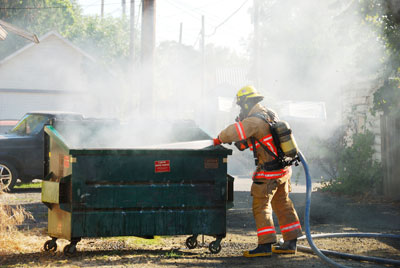When NHS staff were called in to work during the Grenfell Tower blaze they arrived not knowing what to expect. They had last heard that summons after the Westminster and London Bridge terror attacks, so many of the health workers feared a similar event was underway but this crisis was different, with an even greater number of victims.
They arrived to find their workplaces ready for whatever treatment was needed thanks to a carefully prepared crisis plan. The Queen’s subsequent praise of the country’s resilience in the face of these recent tragedies might have been aimed especially at the NHS, as the health service has responded brilliantly to each one of these shocking events.
The Call
 Dr Malcolm Tunnicliff (left) of King’s College Hospital told The Guardian that he was at home asleep at 2.39 am when he answered his phone and heard the automated message “major incident declared, King’s is a receiving hospital.” Within an hour he was treating victims. His race to the hospital was filled with dread.
Dr Malcolm Tunnicliff (left) of King’s College Hospital told The Guardian that he was at home asleep at 2.39 am when he answered his phone and heard the automated message “major incident declared, King’s is a receiving hospital.” Within an hour he was treating victims. His race to the hospital was filled with dread.
Tunnicliff’s wife had confirmed from the BBC News website that the incident was a fire rather than a terror attack, and his car radio reported that the site was a 24-storey building with 120 flats. How many were injured and how badly? The same fears plagued hundreds of staff who were mobilised in the middle of the night for London’s worst tragedy since at least the 7/7 bombings in 2005.
Tunnicliff was one of 15 medics who came in to King’s, including eight radiologists in case anyone needed scans, on top of the normal night team of nine doctors and 20 nurses in A&E that night.
Pediatricians also came from other departments to help affected children while mental health services were given by psychiatrists and chaplains. University College Hospital nurse Simone Williams treated victims outside the building and said victims were spitting out black tar caused by smoke inhalation. At 6.15 am the London Ambulance Service released a statement saying 20 ambulance crews were at the scene as well as “hazardous area response and trauma teams”.
Expense
 Critics have called the Grenfell fire a tragic indictment of the state of social housing and the era of austerity imposed on local authorities.
Critics have called the Grenfell fire a tragic indictment of the state of social housing and the era of austerity imposed on local authorities.
Reports have claimed that the cladding that seems to have caused the fire to spread so quickly could have been made more fire-resistant without going to great expense and that the management trust had failed residents who didn’t even have an integrated fire alarm system despite previous warnings that the building was a fire hazard.
Whatever truths arise from this horrendous event, the NHS founding principle of being free at the point of need could not have been more apparent.
After the firemen who tackled the blaze it was doctors and nurses working through the night who helped to save vulnerable social housing tenants. Fire victims can often suffer damage to their upper airways that does not become apparent for some time, and many of the Grenfell victims were kept in hospital for monitoring without any concern about incurring high bed fees.
Cyanide Precaution
 Alerted hospitals quickly deployed “cyano kits” which contain the antidote to cyanide poisoning because some foams found in old furniture can release the toxin during a fire, creating a serious threat in confined spaces.
Alerted hospitals quickly deployed “cyano kits” which contain the antidote to cyanide poisoning because some foams found in old furniture can release the toxin during a fire, creating a serious threat in confined spaces.
NHS workers were prepared not just for obvious burns and smoke inhalation but for more hidden threats.
Toxic carbon monoxide is created when a fuel burns without enough oxygen, so it is often a danger in house fires. All the victims at King’s had a degree of poisoning that was quickly treated with oxygen masks even though they had not suffered life-threatening levels of exposure.
Calm, purposeful and organised
 The crisis plan worked smoothly. Before the creation of the NHS’s trauma network the victims of such an event were taken to the nearest hospital, which Tunnicliff said would often lead to “carnage” in those hospitals but his own staff were “calm, purposeful and organised.” The crisis was spread across London hospitals and staff coped magnificently.
The crisis plan worked smoothly. Before the creation of the NHS’s trauma network the victims of such an event were taken to the nearest hospital, which Tunnicliff said would often lead to “carnage” in those hospitals but his own staff were “calm, purposeful and organised.” The crisis was spread across London hospitals and staff coped magnificently.
Investigations have barely begun into whether the residents of Grenfell Tower were let down by their council, their housing management organisation and Ministers and Westminster officials responsible for overseeing building regulations and fire safety standards but one verdict is already in.
The NHS and the heroes of the health system were there for the victims.
by Stewart Vickers @VickHellfire
The post Grenfell: NHS Heroes Defy Austerity appeared first on Felix Magazine.
No comments:
Post a Comment